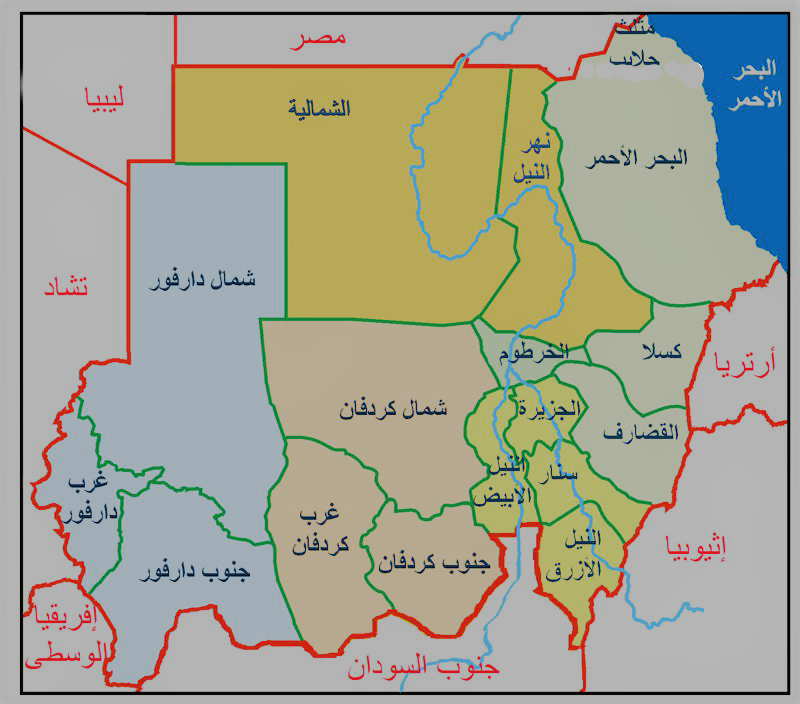
Administrative divisions
Sudan consists of 18 states governed by governors, and each state consists of a number of localities, each locality headed by an appointed commissioner.
The names of the states (along with the capital city of each) are arranged hereunder according to population:
Khartoum State (Khartoum), Gezira State (Wad Medani), North Kordofan State (Al-Obeid), South Darfur State (Nyala), South Kordofan State (Kadugli), North Darfur State (El-Fasher), Kassala State (Kassala), East Darfur State ( Al-Daein), White Nile State (Rabak), Red Sea State (Port Sudan), Gedaref State (Gedaref), Sennar State (Singa), River Nile State (Al-Damar), Blue Nile State (Damazin), West Darfur State (Al-Jeniniya), Northern State (Dongola), Central Darfur State (Zalingei), West Kordofan State (Fula).
Number of localities: 189 localities
Location
Sudan borders the Red Sea and is geographically situated at the crossing point between Sub-Saharan Africa and the Middle East. Seven countries border Sudan, including: Libya and Egypt to the north, Chad to the west, South Sudan to the south, Ethiopia to the east, and the Central African Republic to the south-west. The White and Blue Niles converge in Khartoum, the capital of Sudan, to form the Nile River, which travels through Egypt on its way to the Mediterranean Sea. The Sahelian belt of Sudan includes the desert in the extreme north, fertile territory arable for farming and animal herding in the Nile reservoirs, the Gezira, and the rest of the country from Darfur to Kassala via the Blue Nile and Kordofan States. The Red Sea washes about 900 kilometers of Sudan's eastern coast, making it a sea bridge between Africa and the Middle East. It also provides Sudan with a vital water source as it flows from south to north across the country.
Climate
The Red Sea coast and the north of Sudan both have desert climates, however the summer monsoon affects the semi-arid or semi-desert environment in the south. In the desert regions, summertime highs frequently exceed 43.3 Celsius degrees (110 Fahrenheit degrees), and little rain falls. Desert regions frequently see dust storms. The central plains region in the south also has high temperatures, but the humidity is typically low. Winter is known for its clear skies, with the exception of the Red Sea coast, where there may be a little cloudiness and showers. The south and east experience hot days with chilly evenings, while the north experiences cold evenings. In the south, where it was already hot, the temperature soars by February as the country as a whole experience an increase in temperature.
 Administrative divisions
Administrative divisions  Home
Home